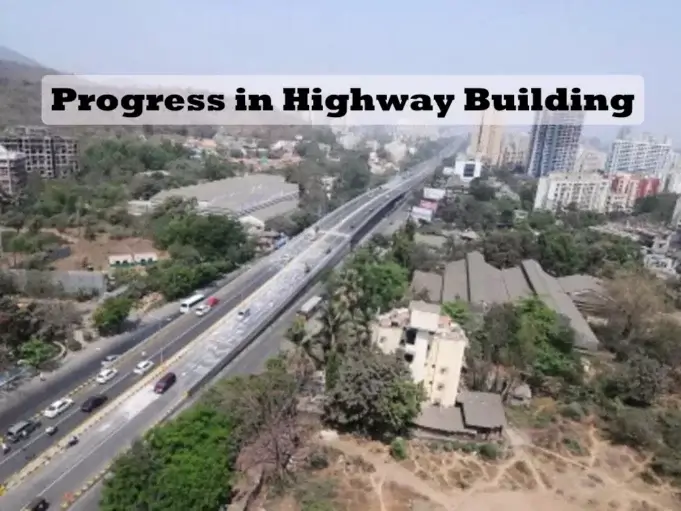The Union Ministry of Road Transport and Highways is primarily responsible for the development and maintenance of National Highways (NHs). The government is actively addressing the challenges the country may encounter in maintaining and expanding its extensive road and rail networks. The infrastructure sector which is the prime mover of the economy contributes to faster economic growth and development. Accordingly, the average Annual Budgetary Allocation of the Ministry has increased by more than 940 percent from about Rs 25,872 crore in 2009-14 to Rs 2,70,435 crore in 2023-24.
The length of 4 Lane plus NH network including High Speed Corridors has increased by more than 250 percent from about 18,371 km in March 2014 to about 46,179 km so far. Also, the length of less than 2 Lane NHs has decreased from about 27,517 km in March 2014 to about 14,870 km. Project implementation has already been started on 21 green field access-controlled corridors including expressways in which work of about 3,336 km length has been completed. Further, the Ministry has evolved a mechanism to ensure the Maintenance and Repair (M&R) of all NH sections through an accountable maintenance agency.
34 tunnel projects are in progress
Currently, there are 34 tunnel projects in progress across the country on National Highways (NHs), out of which 26 tunnel projects are in the Himalayan region. According to the Union Ministry of Road Transport and Highways, all projects are designed with safety as a paramount consideration. These projects are implemented as per site-specific requirements, and established codes, incorporating essential safety measures including those for emergencies such as escape tunnels, twin tubes with cross passages, separation walls with emergency openings, lay-byes, automatic fire detection and suppression systems, etc.
As per IRC guidelines for road tunnels separate service tunnels, adjacent to the traffic tunnels could be considered at the design stage considering various factors like land availability, traffic volume, length of the tunnel, and additional cost. This additional tunnel provides access for maintenance without requiring tunnel closure. This service tunnel can be used as an escape passage during an emergency.
In the Silkyara bi-directional tunnel on Dharasu–Yumunotri highway (NH-134), a provision of separation wall has been provided at the centre of the carriageway along with egress openings at an average interval of 565 m for vehicular crossover and at an average interval of 300 m for the pedestrian cross passage for escape purposes during the emergencies.
The trapped workers were given medical aid and found in good mental & physical health. As financial support, each worker has been paid a sum of Rs 2.00 lakh in addition to one month of paid leave by the Executing Agency. In addition to the above, the State Government of Uttarakhand has also provided financial support to all trapped workers of Rs.1 lakh each.
1,467 NHAI projects under the Bhoomi Rashi Portal
The objective of Bhoomi Rashi portal is to provide a single-point platform for online processing of land acquisition notifications to accelerate highway infrastructure development projects in India and payment of compensation for land acquisition. The portal has been made mandatory for processing all the Land Acquisition (LA) proposals w.e.f. 01 April 2018.
All the Land Acquisition notifications are submitted online by the concerned revenue official of the State Government, duly designated as Competent Authority for Land Acquisition (CALA), and after the approval of the Ministry of Road Transport & Highways, these are sent online to the Government of India Press through e-Gazette. Compensation for land acquisition is also being paid through Bhoomi Rashi portal. The portal has greatly reduced the time period for publication of notifications and brought in efficiency as well as transparency in the whole process.











